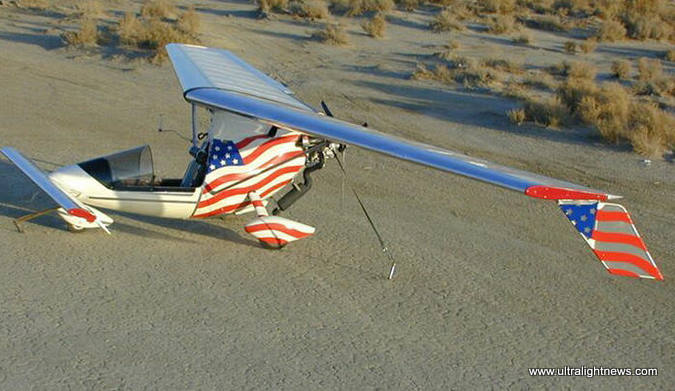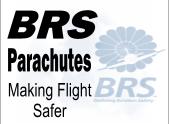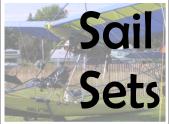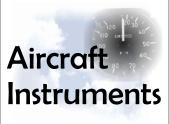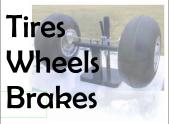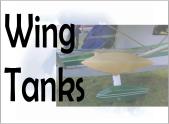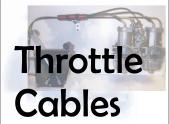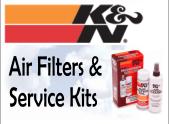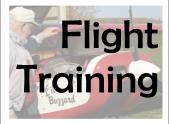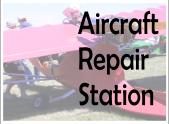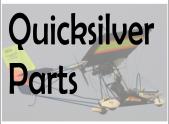IS IT A SAILPLANE ?
Almost, they have L/D' around 14:1 and exhibit excellent glide ratios
due to very light wing loading. However they are a bit too draggy, bumpy,
with not enough penetration speed to be called a true sailplane. Despite
that, many hours have been spent soaring.
HOW DIFFICULT ARE THEY IN CROSSWIND ?
Since they have no tail, they are easy to slip, slide, crab, or
whatever is needed. They tend to float extensively when in ground effect
and then can easily be straightened out and landed.
DIFFICULT TO LAND ?
As mentioned before, they are easy to slip and crab. Both tip rudders
can be deployed simultaneously to act a speed brakes, just be sure to
apply power before touch down to regain forward flying speed. They don't
stall but will still drop if flown below minimum speed.
HOW ABOUT BUMPY AIR ?
Due to the light wing loading, they tend to be more bumpy and bouncy
than heavier aircraft. Although there is ample control authority they are
not too pleasurable on bumpy cross country rides. Seek smoother altitude.
WHO DESIGNED, MADE THEM, AND HOW MANY, AND WHEN ?
Designed by Romuald Drlik, designer of the Eagle, the Lazair, the
Falcon canards and long list of other inventions. His early propeller
designs claimed canard model speed records and eventually became the
Falcon. A Falcon UL still claims the altitude record of 26,900'. The first
foot-launched hang glider and the Solaris employ his propeller designs as
well. The Eagles were marketed by Larry Newman under American Aerolites,
then as Falcons under American Aircraft. I understand about 1500 single
seat Falcon ULís were made, then the 2 seat Falcon XP followed due to the
need for a trainer. 500 were made. A large number were exported to other
countries, mainly S. America. All this happened between about 1975 and
1986. Click here for
HISTORY
page
WHY DID THEY STOP MAKING THEM ?
This was the period when lawsuits were proliferating with disastrous
results to the aircraft industry. Although Falcon itself was not a target
the parent company American Aircraft chose to shut down.
WHAT WERE MODELS AND GENERAL SPECS ?
Falcon UL, part 103 legal, ew: 54; mgw: 530; wingspan: 36'; length:
14'3"; climb: 650fpm; takeoff: 200'; landing: 250'; cruise: 55; vne: 70;
range: 121; L/D: 15:1; Rotax 277, 27hp; 5g fuel; front wheel scuff brake.
forward canopy, other optional. Falcon XP, 2 seat part 103 trainer or
experimental, ew: 500; mgw: 1050; wingspan: 36'; length: 17'; climb:
500/800; takeoff: 200/300; landing: 250/400; cruise: 75 to 85; vne: 92;
range: 300/250; L/D: 14:1; rotax 503 50hp, 15g fuel; electic starter. main
gear disk brakes. full canopy.
Click here for
OEM SPECS and LITERATURE
WHAT CONSTRUCTION AND MATERIALS WERE USED ?
Both aircraft had composite fuselages (fiberglass with gelcoat),
aluminum d- tube wings, foam ribs, cap strips, aluminum trailing edges,
and aluminum canard. In most instances XP parts were the same dimensions,
just twice as thick. Wings, elevators, and rudders were covered with
Tedlar, front gear retract. BRS on all.
HOW MANY ARE STILL LEFT ? ANY IN MY AREA ?
I have no idea, there is no source that has this information, not even
partially. But I would guess more than half, many in foreign countries. I
am compiling a data base on existing Falcons and will be glad to share the
results.
WHY DON'T THEY MAKE THEM ANYMORE ?
A number of times a number of companies attempted to re-introduce them
but never succeeded. Most likely due to the high number of parts count and
the present cost of labor as well as the stringent testing required (read
time=$) by the designer. After all, he has never lost a lawsuit, which
proves the safety and validity of the design manufacturing and testing
process.
WILL ANYONE MAKE THEM AGAIN ?
Probably not. Too costly to manufacture, at least not in the original
configuration and at 1986 prices.
WHAT'S NEXT ?
I had been working with the designer for some time in an effort to
introduce the next series of Falcons, namely the Peregrine Falcons. It was
meant to be a state of the art Ultralight with a 447 engine. Unfortunately
that venture did not get off the ground ( pun intended ) for a number of
reasons; it is virtually impossible to produce a safe aircraft with
adequate performance and meet the 103 requirements and still sell it at a
reasonable price. Currently Larry Neal is working on the Falcon 2000. It
will be a 2 seat version of the Peregrine and will fall in the
experimental /UL trainer category with specs almost identical to the
aforementioned XP series. The aircraft will come in 5 separate kit
installments at $ 5000.- each, with fuselages, wings, canards, engine
packages available now. We have a video on it, available at our cost of $
10.00, returnable, refundable, with more info on
http://www.teamfalcon.com . This
aircraft uses state of the art space age materials, a fraction of the
parts count, offers improved performance, extremely low building time,
comes complete, complete and can be introduced at a fair price.
CAN YOU HELP ME FIND A USED ONE ?
I occasionally have one for sale myself, and I also offer the
newsletter and the listing of used Falcons (and others) free of charge.
They come and go quickly, best to leave your name and request repeatedly.
Other sources are Ultralight Flying mag., Kitplanes, Sport Aviation,
trade-a-plane. Used single seaters range from 2500 to 5000, two seaters
5000 to 11000, all depending on condition, options, extras, location.
WHAT THINGS SHOULD I LOOK FOR WHEN BUYING A USED ONE ?
First the condition of the Tedlar. A plus if recovered with Stits or
similar, as long as nothing is hidden. Look for glass damage where landing
gear meets fuselage under the tank, sloppy main gear cables, evidence of
rough landings. Look for fiberglass cracks in nose wheel area, dents in
D-tube or canard, cracked ribs, bent trailing edge, loose ailerons and
hinges, especially on UL. Loose controls. Fuselage bends and bows in front
of engine. Fuel leaks inside. Secure chute. Condition of the lexan canopy,
as they tend to scratch easily and cleaning makes them worse. The rest is
routine: engine, gearbox, propeller, wheels, etc. I will be glad to
assist; I suggest you take plenty of pictures, a video if possible, or
contact me as I might know its history.
WHY ARE THEY SO HARD TO FIND ?
People are holding on to them. They are just great, a real pleasure to
fly and inexpensive to own. Many owners try something else and ultimately
come back to the falcons.
HOW ABOUT MANUALS, VIDEOS ?
No problem, have both manuals ($49.00 for XP and $ 25.00 for UL ),
final assembly video with Tedlar covering ($39.00 ) also set of 3 articles
by Gary Kneier on XP improvements w canard troubleshooting manual ($20.00
). Click here for
SUPPLIES page.
HOW ABOUT PARTS ? WHO HAS PARTS ?
Usually I am able to either find or make new or used parts. I have to
be resourceful, owning several of them.
Click here for PARTS listing.
HOW ABOUT A PARTS BOOK AND PRICE LIST ?
No good. The manuals however are sufficient to be used as parts books.
WHAT'S THE COVERING MADE OF ? WHERE CAN I GET IT ?
The original stuff was DoPont Tedlar, a polyvinylfuoride film made in
many versions, with none intended for this use of course. 2 mil thick,
applied with double seam stick tape, mylar or tedlar tape on edges,
heatshrunk, ready to fly. Minimum purchase: $3000.-, forget it. I have
found an identical product by a different supplier for different
application and can supply it again. Costs $ 632.-- including tapes to do
whole airplane. Advantage: quick, easy, light, see-through, no painting,
stays clean, will withstand UV, ready to fly. Disadvantage: Glues in the
tapes degrade in UV and need attention, repair, taping, patching, eventual
recovering (5 to 10 years depending on UV exposure). To prolong the life,
silver mylar tape is used over all exposed tape areas. Ask for my
"FAQ-cover", (frequently asked questions on covering options) for more
info. Of course you can cover with Stits or similar, just try to keep the
weight down and the colors light to keep temperature down.
Click here to switch
to FAQ COVER page.
Information courtesy of:
http://www.aerofalcon.com/
